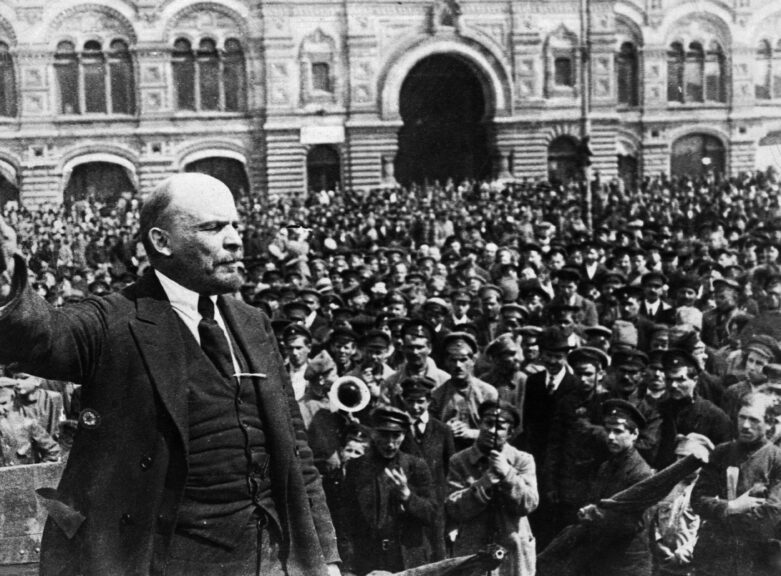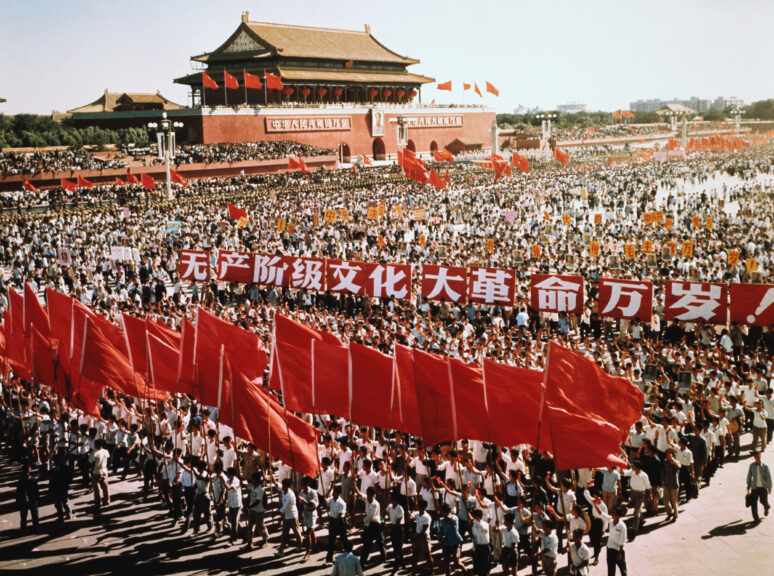Nazi dictator Adolf Hitler may be the most infamous villain in world history. He perpetrated the Holocaust, unleashed a reign of totalitarian oppression over most of Europe, and initiated the most destructive conflict the world has ever seen.
Ian Kershaw, a distinguished historian widely regarded as one of the foremost experts on Hitler and the Nazi regime, has referred to him as “the embodiment of modern political evil.” The accuracy of that assessment is showcased by the fact that partisans of all political stripes (though it is especially favored by the Left to refer to anything even remotely Right-of-center) use comparisons to Hitler and his ideology as the ultimate slander against their opponents.
In fact, as many have pointed out, the comparison has become so ubiquitous that in many ways it has lost its effectiveness as a political epithet. Additionally, to rely on a single historical reference to embody evil diminishes public awareness of other psychopathic despots (especially Left-wing ones) who have rampaged through history, even in the last century.
So, here is a non-exhaustive list of tyrants of the 20th Century who we can reference besides Hitler.
Vladimir Lenin
Vladimir Lenin orchestrated the first, but by no means last, successful communist revolution and forged what would become the Soviet Union in a tide of violence and repression.
The Bolsheviks launched the October Revolution of 1917 to overthrow the Provisional Government of Russia, which had ruled the country since Tsar Nicholas II abdicated during the February Revolution earlier in the year. The communists quickly seized control of Petrograd (today St. Petersburg) and Moscow, but the country soon descended into a bloody and chaotic civil war as anti-communist factions — ranging from moderate socialists to monarchists to anarchists and separatists — resisted the new government.

Credit: Bettmann / Contributor via Getty Images
On the orders of Lenin and other top Bolsheviks, soldiers of the newly formed Red Army seized food, property, and other valuables from peasants in order to support the war effort, creating famine and destitution throughout large swathes of the country.
Lenin oversaw the creation of the Cheka, the Soviet Union’s first secret police, and during the civil war it carried out mass arrests, torture and executions in order to suppress any political opponents of the new regime. The Cheka also founded and ran the USSR’s infamous prison labor system — the gulags.
Lenin also endorsed the murder of the former tsar, his wife, and their five children in July 1918 as anti-communist forces approached the location where they were being held prisoner by the Bolsheviks.
CLICK HERE TO GET THE DAILY WIRE APP
The Russian Civil War lasted more than 5 years and caused the deaths of up to 10 million people — five times the number of Russians who died in World War I.
Though his reign over the nascent Soviet Union was relatively short, a little over 6 years, Lenin’s ruthlessness provided a blueprint for Left-wing dictators who rose to power throughout the century, most infamously his successor.
Joseph Stalin
Joseph Stalin’s rise to power in the aftermath of Lenin’s death in 1924 foreshadowed his own brutal tenure as the leader of the Soviet Union. He supplanted and eventually exiled Lenin’s preferred successor, Leon Trotsky, and had several of his other opponents demoted and replaced by allies.
Once he secured his position as leader of the Soviet Union, Stalin embarked on a program of collectivization, the forced consolidation of individual farms into large, state-controlled collectives. Along with this policy, Stalin called for the elimination of prosperous peasants known as kulaks “as a class.” Though these farmers were rarely much better off than their neighbors, Stalin designated them as class enemies, and the new secret police, the NKVD, carried out mass arrests and deportations of the kulaks, which resulted in hundreds of thousands of deaths.
Soviet collectivization of agriculture under Stalin also caused a massive famine that afflicted Ukraine and southern Russia from 1930 to 1933. Known as the Holodomor in Ukraine, the Great Soviet Famine killed an estimated 10 million people, of which roughly 4 million were Ukrainians. The legislatures of dozens of countries, including the United States, recognize the Holodomor as a genocide against the Ukrainian people.
Though he had dealt with Trotsky (eventually having him assassinated in Mexico in 1940), Stalin still feared internal opposition to his rule, causing him to instigate The Great Purge in 1936.
Stalin once again deployed the NKVD to hunt down and terrorize his enemies, real and imagined. Dozens of high-ranking Soviet officials, including several original Bolsheviks who had helped Lenin seize power in 1917, were found guilty in show trials and executed for supposedly conspiring to overthrow Stalin.
The purge unleashed a wave of paranoia throughout the country, and suspicion soon extended to the military, ethnic minorities, and even the general population. By the time Stalin declared in 1938 that the internal threat to the Soviet Union had been suppressed, at least 700,000 people had died.

Bettmann / Contributor via Getty Images
As a result of the Great Purge, the gulag system founded under Lenin exploded into the infamous “Gulag Archipelago” as more and more people were accused of being counter-revolutionaries. Of the estimated 17 million people who were sent to the gulags between 1930 and 1953, between 1.2 and 1.7 million died in the camps.
The Soviet Union invaded Poland along with Nazi Germany in September 1939 as part of the Molotov-Ribbentrop Pact, which facilitated the partition of Eastern Europe between the two countries and their cooperation until the German invasion of Russia in 1941. Stalin ordered the mass execution of Polish prisoners-of-war who had been captured during the invasion, and NKVD agents killed over 20,000 Poles during the Katyn Massacre in April and May 1940.
Stalin continued his totalitarian policies during World War II, in which anyone accused of questioning his leadership was severely punished and collaborators with the Nazis were killed or sent to the gulags. Arrests of political dissidents, carried out by a succession of increasingly monstrous NKVD directors, continued right up to Stalin’s death.
After he rose to power in the wake of Stalin’s death in 1953, Nikita Khrushchev denounced Stalin’s barbarity and embarked on a campaign of de-Stalinization to dismantle his policies. Estimates on exactly how many people during the Stalin era vary greatly, with most historians placing the death toll between 6 million and 20 million.
Mao Zedong
In 1949, the Chinese communists led by Mao Zedong — after a decades-long civil war — forced the Chinese Nationalists under Chiang Kai-Shek to retreat to Taiwan, cementing communist control over the Chinese mainland.
After a period of relative openness designed to bait opponents of the regime into publicly criticizing the CCP, Mao declared the Anti-Rightist Campaign in 1957 to root out anyone who opposed communist rule or collectivization. Between half a million and 2 million people were arrested during the campaign, and hundreds of thousands died due to starvation or ill-treatment during captivity.
Mao’s most destructive program was The Great Leap Forward, which was intended to transform China from an agriculture-based economy to an industrial powerhouse that could compete with the Soviet Union and the West. The central government set unattainable production quotas for both industry and agriculture, causing lower-level bureaucrats overseeing the programs to take more food from peasants and overwork factory laborers. Out of fear of being labeled anti-communist or, more importantly, anti-Mao, many officials refused to report failures and fabricated data to meet the quotas.
Anyone who opposed the Great Leap Forward could be arrested, tortured, conscripted into forced labor battalions, or summarily executed by the communist overseers. The program was a complete economic disaster, plunging tens of millions of Chinese into grinding poverty.
Because the cadres didn’t report food shortages and took more food from peasants to fill the outlandish quotas, famine broke out across China. The Great Chinese Famine lasted from 1959 to 1961 and is widely considered one of the worst famines in human history. Scholars continue to debate the exact death toll, but most estimates fall between 15 and 55 million deaths from the famine alone.
It wasn’t until 1981, 5 years after Mao’s death, that the CCP officially recognized that the famine had been primarily caused by policies implemented during the Great Leap Forward.
Much like Stalin, Mao eventually became paranoid about the threat of internal threats to his absolute power. He insisted that capitalists and conservatives had infiltrated Chinese society and called on young people to purge the country of any elements that might threaten communism, launching the Cultural Revolution. Units of Red Guards, usually comprised of university students, targeted local government officials, teachers, community elders, and even parents who were accused of not being sufficiently dedicated to Chairman Mao.

Bettmann / Contributor via Getty Images
Though struggle sessions, in which someone accused of disloyalty to communism was forced to admit their crimes and subjected to public ridicule and abuse, had been a tactic used by the CCP to force ideological conformity for decades, the practice became infamous during the Cultural Revolution. Heretofore committed Chinese communists were suddenly accused of not being ideologically pure enough or being secret capitalists, hauled out into a public space, and harangued by their neighbors. They were most often imprisoned afterward, but in many instances they were executed by the government or killed on the spot by the mob.
Massacres of suspected traitors took place across China, and in the southern province of Guangxi hundreds of instances of cannibalism were reported. Millions were imprisoned or persecuted by the Red Guards, driving thousands to suicide. Overall, between 500,000 and 2 million people died as a result of the Cultural Revolution.
Much like Stalin’s Great Purge, the Cultural Revolution served to cement Mao’s position as the undisputed leader of the country.
By the time Mao died in 1976, an estimated 65 million people had died as a result of his regime of terror and subjugation.
Lenin, Stalin, and Mao are all synonymous with communist brutality in the 20th century. Each of them displayed just as much cruelty, ruthlessness, and disregard for human life as Hitler did during his vicious domination of Europe. Though references to Stalin and Mao are made in political discourse, they pale in comparison to those accusing someone or an idea of being Hitler-esque. And the crimes of these men deserve just as much scrutiny and public awareness as those of Hitler and the Nazis. More frequent references to these despots not only phases out the tired Hitler trope, but it can also help point out the horrendous atrocities carried out in the name of communist utopia.

Continue reading this exclusive article and join the conversation, plus watch free videos on DW+
Already a member?

.png)
.png)

